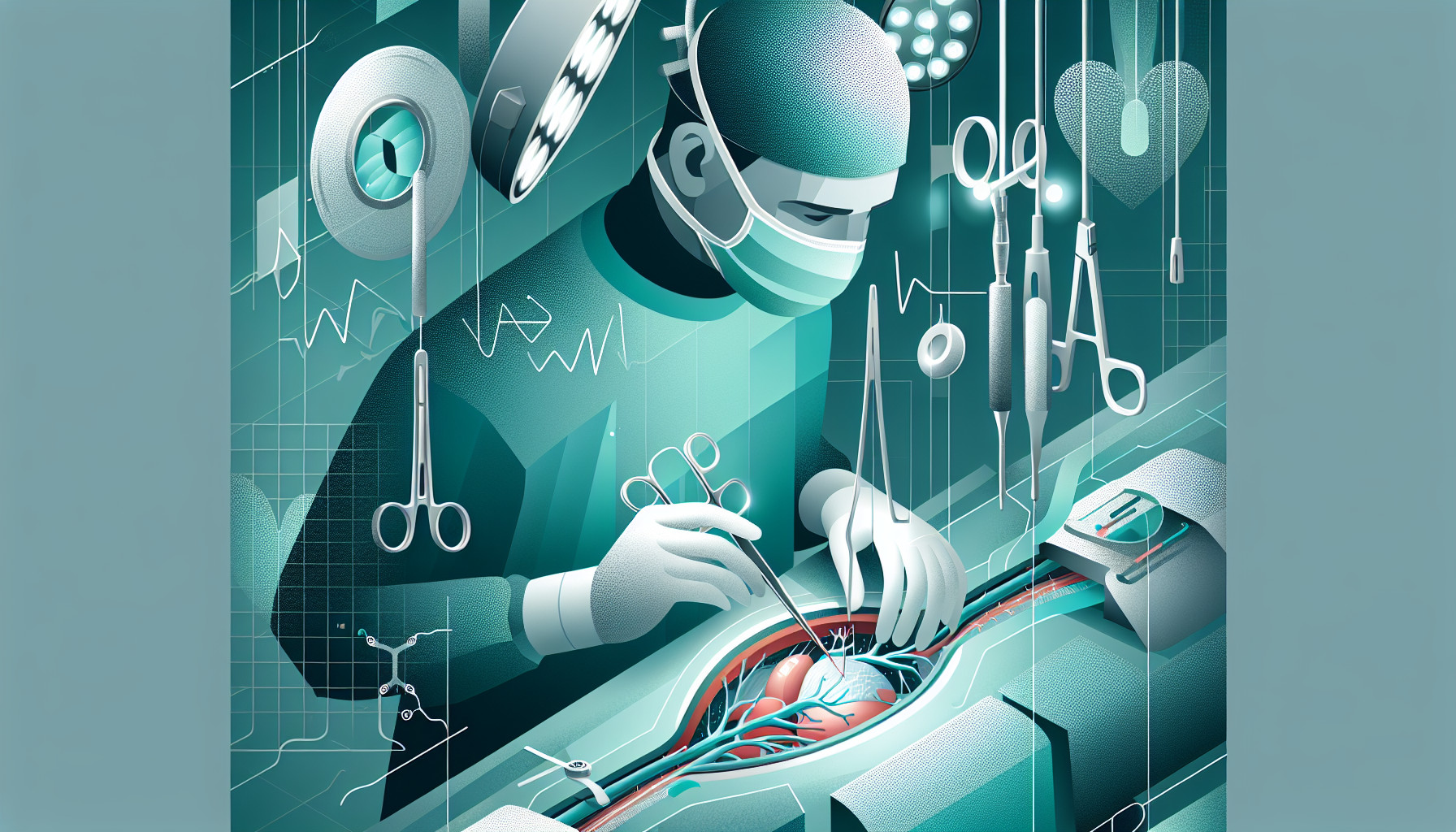Our Summary
This research paper discusses the problems and potential solutions related to arteriovenous fistula, a connection made surgically between an artery and a vein. This connection is important for people undergoing hemodialysis, a treatment for severe kidney failure. The existing surgical method of creating arteriovenous fistula can be quite challenging and may not always be successful, often requiring several interventions. Therefore, the research is focused on exploring new approaches that could potentially improve the surgical techniques and their outcomes. One such approach being studied is the use of minimally invasive methods and innovative devices. The initial results of these investigations have been published.
FAQs
- What is an autogenous arteriovenous fistula and why is it considered the ideal access for hemodialysis delivery?
- What are some of the shortcomings associated with the surgical creation of an arteriovenous fistula?
- What are some new approaches being investigated to improve surgical techniques or outcomes of arteriovenous fistula creation?
Doctor’s Tip
One helpful tip a doctor might tell a patient about AV fistula creation is to follow post-operative care instructions carefully to promote proper healing and maturation of the fistula. This may include keeping the surgical site clean and dry, avoiding heavy lifting or strenuous activity with the arm on the side of the fistula, and monitoring for any signs of infection or complications. Additionally, it is important for the patient to follow up with their healthcare provider regularly for monitoring and maintenance of the fistula to ensure long-term success.
Suitable For
Patients who are recommended for AV fistula creation typically include those with end-stage renal disease who require hemodialysis. These patients may have poor vascular access or have exhausted other options such as arteriovenous grafts. Additionally, patients who are at risk for central venous catheter-related complications or who have a high risk of infection may also be recommended for AV fistula creation. It is important for patients to be evaluated by a healthcare provider to determine if they are suitable candidates for AV fistula creation.
Timeline
Before AV fistula creation:
- Patient is diagnosed with end-stage renal disease and requires hemodialysis for treatment.
- Patient undergoes evaluation by a vascular surgeon to determine the best site for AV fistula creation.
- Preoperative testing, including blood work and imaging studies, are conducted to assess the patient’s vascular anatomy and suitability for AV fistula creation.
- Patient receives counseling on the procedure, risks, and benefits, and provides informed consent.
- Surgical AV fistula creation procedure is scheduled.
After AV fistula creation:
- Patient undergoes the surgical procedure to create the AV fistula, which involves connecting an artery to a vein to create a high-flow access for hemodialysis.
- Postoperative care includes monitoring for complications such as bleeding, infection, or clotting.
- Patient is educated on caring for the AV fistula, including proper hygiene, monitoring for signs of infection, and avoiding activities that could damage the access.
- Follow-up appointments are scheduled to monitor the maturation of the AV fistula and ensure proper function for hemodialysis.
- Patient begins hemodialysis treatments using the newly created AV fistula, with regular monitoring of access flow, function, and patency.
- Ongoing care and surveillance of the AV fistula are required to ensure long-term success and function for hemodialysis delivery.
What to Ask Your Doctor
- What are the benefits of an AV fistula compared to other types of dialysis access?
- What are the potential risks and complications associated with AV fistula creation?
- How long does it typically take for an AV fistula to mature and be ready for use?
- What can I do to help promote the maturation of my AV fistula?
- What follow-up care will be required after the AV fistula is created?
- Are there any alternative methods of AV fistula creation that may be suitable for me?
- How successful is AV fistula creation in patients with my specific health condition?
- What are the expected outcomes and success rates of AV fistula creation in terms of long-term patency?
- What can I expect during the AV fistula creation procedure and recovery process?
- Are there any lifestyle changes or restrictions I should be aware of after getting an AV fistula?
Reference
Authors: Rajan DK. Journal: Semin Intervent Radiol. 2016 Mar;33(1):6-9. doi: 10.1055/s-0036-1571805. PMID: 27011421
